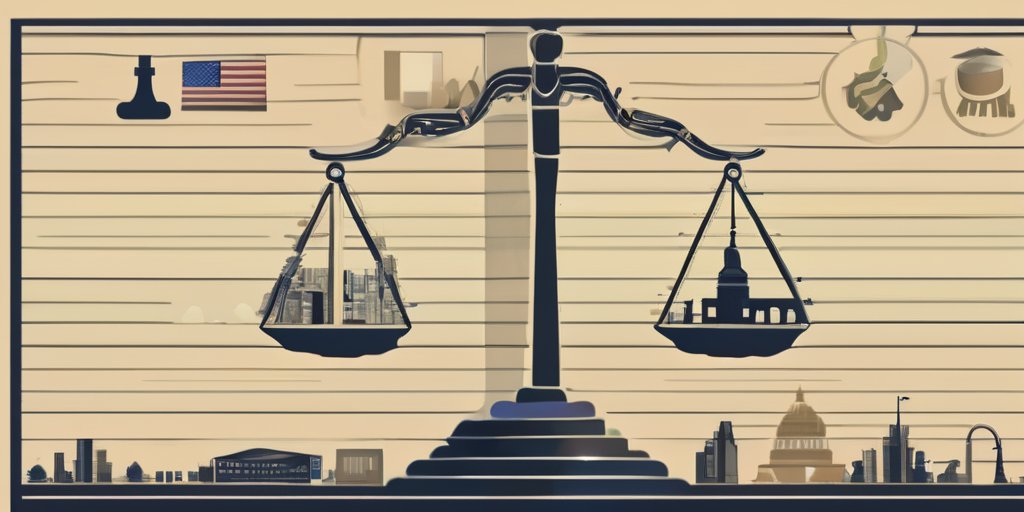In a bold move that could reshape the American economic landscape, President Donald Trump has endorsed the recently passed Senate bill, branding it the “big, beautiful bill” – a legislative effort he claims will stand out as one of the most significant in American history. As this sweeping legislation makes its way through the House of Representatives, it promises to deliver various tax reforms and economic implications that will be felt across the nation.
### Corporate Benefits
Big business is cheering the Senate’s passage of the bill, with organizations like the US Chamber of Commerce and Business Roundtable applauding the decision. The legislation aims to cement the tax cuts from the Tax Cuts and Jobs Act of 2017, ensuring that corporations can continue to write off equipment costs in their first year of purchase – a provision that was set to phase out.
Moreover, manufacturers are set to gain from a groundbreaking change regarding the construction of new manufacturing facilities, as businesses will be allowed to fully deduct these costs immediately, retroactive to January 19, 2025. This provision applies to constructions initiated before January 1, 2029. Additionally, the bill promotes American chip-making, enhancing tax credits for semiconductor firms building plants within the USA.
For small businesses, the National Federation of Independent Business has hailed the legislation for preserving a special deduction for pass-through entities. This deduction could climb from 20% to 23% in the House’s version of the bill, providing a significant boost to small partnerships and business owners.
### Mixed Effects on Income
While the wealthiest Americans stand to benefit greatly, with the top 20% of earners projected to see a nearly $13,000 annual increase after taxes, the ramifications of these tax cuts evoke strong contention among various demographics. Particularly, the top 0.1% could enjoy an average annual income surge of over $290,000.
High-income households in high-tax states may also find some relief, with increased deduction limits for state and local taxes set at $40,000 for five years for incomes up to $500,000. Yet, the legislation has taken a controversial stance by eliminating unemployment benefits for millionaires who lose their jobs.
### Impact on Vulnerable Populations
However, Trump’s bold reforms could lead to dire consequences for many low-income Americans. The legislation proposes significant cuts to crucial safety net programs like Medicaid and food stamps, introducing rigorous work requirements for obtaining benefits that could strip millions of coverage. Congressional analyses predict a potential loss of Medicaid coverage for many, leaving them without access to job-based health insurance.
Individuals below the $18,000 income threshold may see a $165 decrease in their after-tax income, demonstrating the stark disparity in economic implications created by this bill. Mid-income households can expect a modest increase, while the lowest earners brace for adverse effects of proposed safety net cuts.
### Health Care System Pressure
The bill’s implications stretch over the health care landscape as well, as hospitals anticipate severe challenges stemming from cuts to Medicaid funding. They’ll be left grappling with more uncompensated care costs while providing services to uninsured patients. The American Hospital Association expressed deep disappointment with the proposed changes, citing a historical $1 trillion in Medicaid reductions.
### Environmental Concerns
Amidst the economic boost envisioned by the Trump administration, environmentalists are alarmed. The bill’s removal of tax incentives for renewable energy projects by 2027, coupled with demands for stringent requirements to access these incentives, has drawn criticism from leading energy organizations. Experts fear that these changes would hinder job growth in the clean energy sector and lead to increased utility costs.
### Deficit Increase Fears
On a macroeconomic level, the Congressional Budget Office has projected that this legislative package could inflate the federal deficit by approximately $3.4 trillion over the next decade. Such an increase may result in elevated interest rates, which would further complicate Americans’ financial undertakings from buying homes to financing businesses.
### Conclusion
As America stands at the precipice of a major transformation in tax and welfare legislation, the broader question remains: who truly benefits from this “big, beautiful bill?” As lawmakers deliberate in the House, the nation watches closely, aware of the potential economic ramifications that might resonate for generations to come.
